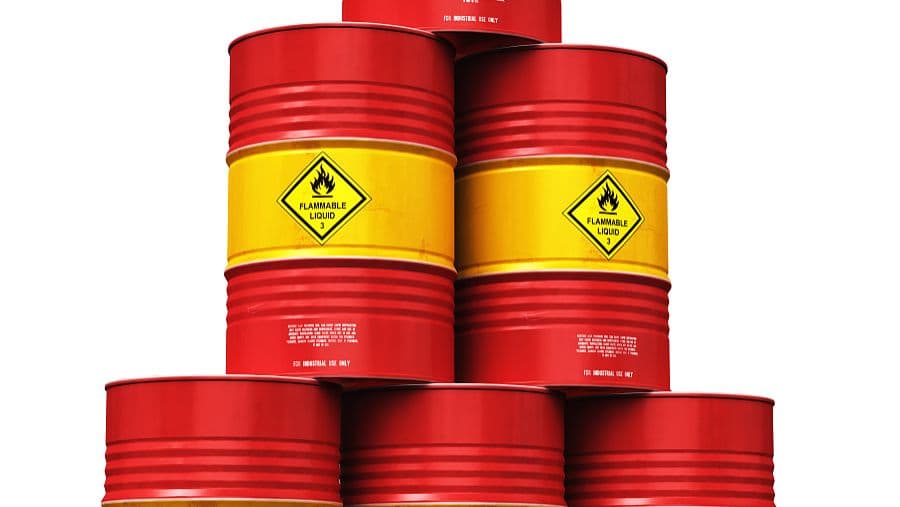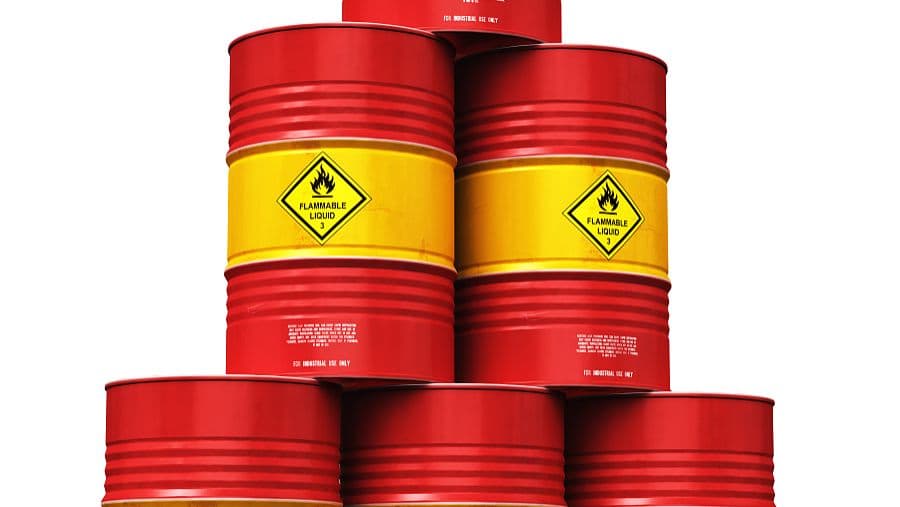According to statistics, metal corrosion causes a direct economic loss of 2% to 4% of GDP every year.
It is also reported that approximately one-third of smelted metals worldwide are scrapped due to rust in industry.
To prevent rust, people use various methods, and using rust inhibitors to protect metal products is one of the most common methods.
Rust on iron appears red, rust on copper appears green, and rust on aluminum and zinc results in white rust.
From an industrial point of view, preventing corrosion of iron and steel is crucial.
Anti-rust oil is a type of oil that has anti-rust properties, consisting of oil-soluble corrosion inhibitors, base oil and auxiliary additives.
Anti-rust oil is widely used to prevent rust in mechanical products, seal and prevent rust in various metal products, and prevent rust during various processes.

According to different properties and uses, anti-rust oil can be divided into the following categories:
1. Replacement of anti-rust oil
The displacement type of anti-rust oil typically uses sulfonate with strong adsorption as the main anti-rust agent. This can replace water and sweat on the metal surface to prevent corrosion caused by human sweat.
In addition, the displacement-type anti-rust oil itself is absorbed by the metal surface and generates a firm protective film to prevent the invasion of foreign corrosion media. Consequently, it is widely used for inter-process rust prevention and surface pretreatment before long-term rust prevention.
In addition, there are various replacement anti-rust oils that can be used directly for sealing and anti-rust purposes. According to the domestic standard SH0367-92 for rust preventive oil replacement, these petroleum products are classified into No. 1, No. 2, No. 3 and No. 4.
2. Anti-rust oil diluted in solvent
These anti-rust oils contain volatile petroleum solvents or are diluted with solvents for room temperature use. They include hard film anti-rust oil diluted in solvent, soft film anti-rust oil diluted in solvent, replaceable anti-rust oil diluted in solvent and others.
Once applied to a metal surface, the solvent in this type of anti-rust oil evaporates naturally and creates a uniform protective film. It is commonly used for rust prevention on the surface of large mechanical equipment and can even be used to seal raw materials and equipment stored outdoors.
A disadvantage is that parts coated with this oil should only come into contact or be packaged after the solvent has evaporated, otherwise they will stick together. Therefore, it is only suitable for parts with simple structure and not applicable for parts with complicated structures and numerous small holes. It is also not suitable for internal sealing.
The petrochemical industry standard for solvent-diluted anti-rust oil is SH0366-92, while the national standard is GB4879-85B2. The latter is further categorized into four types:
Type 1 – Rigid film, ideal for long-term indoor and outdoor storage.
Type 2 – Soft film, suitable for long-term indoor storage.
Type 3 – Water-displacing soft film, which can replace water and is suitable for rust prevention on indoor metal products.
Type 4 – Transparent, non-stick film.
3. Seal anti-rust oil
Sealed anti-rust oil has several distinctive features such as normal temperature coating, no solvents, thin oil film, protection against rust between processes and during long-term storage, excellent compatibility with lubricating oil, and no need for cleaning during withdrawal of the seal.
In general, there are two types of sealed anti-rust oils: immersion and coating.
(1) Immersion type
Products can be fully immersed in a plastic bottle filled with anti-rust oil for sealing. It is acceptable to add 2% or less of a corrosion inhibitor to the oil, but it is essential to add an antioxidant regularly to prevent the oil from oxidative deterioration.
(2) Coated type
These are thin layer oil varieties that can be used directly for coating. However, it is essential to add more corrosion inhibitors to the oil, and multiple corrosion inhibitors must be used together.
In some cases, it is necessary to add tackifiers such as polyisobutylene to increase the viscosity of the oil film.
When combined with external packaging, it can be used for long-term internal storage and provides a good rust prevention effect.
The national standard for anti-rust oil seal is GB4879-85 B3.
4. Emulsified anti-rust oil
This is a type of oil that contains a rust inhibitor and an emulsifier. When used, it is diluted with water to create an emulsion, which is why it is known as emulsified anti-rust oil. It is known for its low cost, safe use, ability to reduce environmental pollution and energy-saving characteristics.
When applied to a metal surface, it forms a protective oil film after the water evaporates. Currently, it is mainly used for inter-process rust prevention and can also be used for long-term storage.
The national standard for emulsified anti-rust oil is GB4879-85 B4.
5. Anti-rust lubricating oil
This is a dual-use oil, having lubricating and rust-preventing properties.
It is necessary that the oil can be installed and used directly without the need to remove the seal oil after removing the seal.
Alternatively, the test oil can be used to seal the product and it is not necessary to change the oil after the test. This type of oil is commonly used in systems that require lubrication or sealing.
Based on usage, the oil can be categorized as internal combustion engine rust-proof oil, hydraulic rust-proof oil, main shaft oil, gear oil, air compressor oil, instruments and bearings, rust proof test oil and more.
6. Anti-rust grease
It is a type of paste created by adding anti-rust additives to industrial petroleum jelly base oil or petroleum wax, such as paraffin wax and microcrystalline wax.
The hot plating method is generally used for sealing.
It is characterized by a thick oil film (generally around 0.01-0.2 mm and sometimes up to 0.2-1 mm), high oil film strength, resistance to loss and volatilization, and a period of prevention of rust for more than 2 years.
This paste is widely used for long-term storage of mechanical products and large equipment.
However, a disadvantage of this paste is that the oil sealing and unsealing process requires heating, which necessitates good thermal stability and oxidation resistance stability.

























































